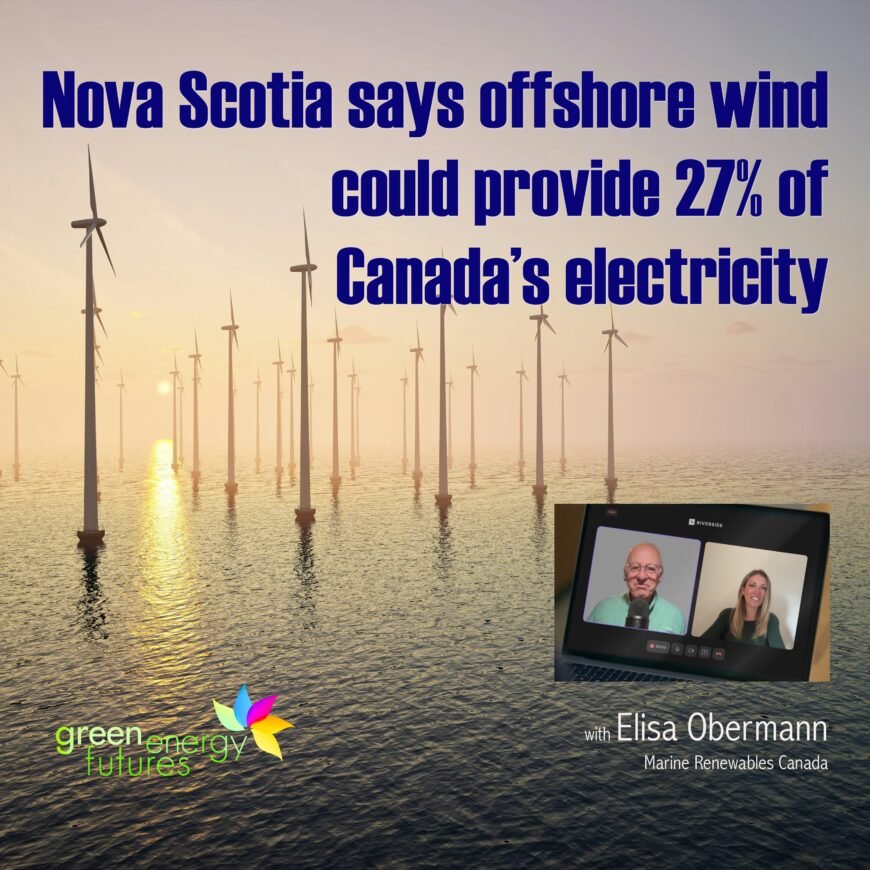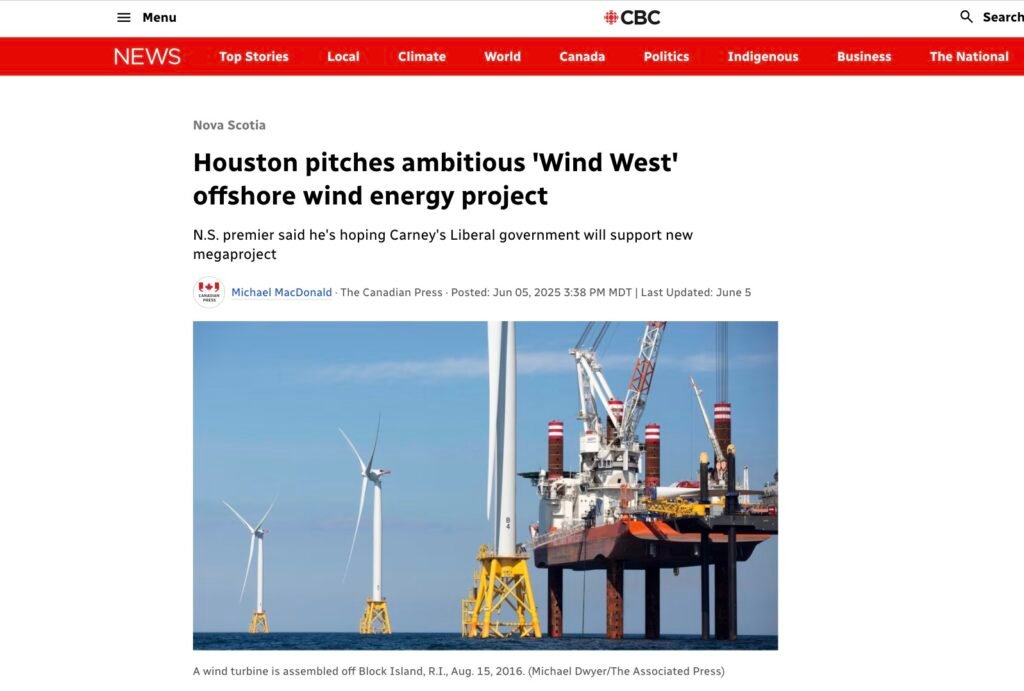Table of Contents
By David Dodge, GreenEnergyFutures.ca
Nova Scotia just announced that it will offer leases for the development of five gigawatts of offshore wind power.
Canada has about 24 gigawatts of onshore wind capacity, and it’s grown 24% in four years, but surprisingly, these could be the first offshore wind projects in Canada.
“That could power all of Nova Scotia easily,” says Elisa Obermann, executive director of Marine Renewables Canada. Nova Scotia uses about two and a half gigawatts of electricity, “so they have big ambitions.”
Nova Scotia has been busy assessing the resource and laying the policy and regulatory groundwork for offshore wind and sees enormous potential.
60 gigawatts of offshore wind power
“The first areas that have been identified for offshore wind development could produce over 60 gigawatts.
That’s enough electricity to provide 27% of Canada’s electricity.
The last time I heard Nova Scotia using such enthusiasm for a new renewable energy source was in 2011, when they were extolling the virtues and potential of tidal energy.
Green Energy Futures was there to witness the power of the tides. On an average day, 160 billion tonnes of seawater flows into the Bay of Fundy, raging at speeds of up to 5 meters per second. During a spring tide, the water can rise an astounding 14 meters (50 feet).
As of 2022 they were still working on the potential of tidal energy to power “all of Nova Scotia,” but to their credit their enthusiasm had not diminished, much.
But this is different.
Offshore wind power is a proven technology
Offshore wind is a proven technology. As of 2022, there were 64.3 gigawatts of offshore wind capacity installed in the world, with China leading the market at 49%, followed by the United Kingdom (22%) and Germany (13%).
And Nova Scotia is bullish on offshore wind.
“Premier Tim Houston of Nova Scotia has really been leading the charge on this idea of Wind West. It’s a really ambitious initiative to get offshore wind electricity to other provinces across Canada,” says Obermann.
Houston wants Wind West designated as a Nation Building project under Prime Minister Mark Carney’s Building Canada Act.
The idea is to build an east-west transmission corridor connecting Atlantic Canada with Ontario, Quebec, and the northeastern United States.
Grid interties a Nation Building project for a clean energy future
“Offshore wind from Nova Scotia can provide enormous quantities of clean energy, at stable prices, while diversifying supply and boosting reliability for customers,” says the Nova Scota Report (PDF) entitled “The East Energy Partnership – Wind West – A Nation Building Energy Project.”
Obermann says Nova Scotia and the Government of Canada are aligned in these goals.
“Over the weekend, [we] were part…of a round table with federal minister Sean Frazier. And later in the day, we were joined by the Nova Scotia minister of energy, Trevor Boudreau,” says Obermann.
“Through all of my time working in this sector, I have never seen so much alignment between provincial and federal governments on something like this, where they really want to drive the industry.”

Offshore Wind is Big
“When we’re talking about offshore wind turbines, right now developers are looking at turbines that are 15, and even 20 megawatts per turbine,” says Obermann.
Indeed, China is ready to produce 26-megawatt wind turbines that stand 185 meters (607 feet) tall with a rotor diameter of 310 meters (1,017 feet).
A 15-megawatt turbine is capable of producing enough energy for 10,000 homes using a conversion factor used in Texas.
The 15-megawatt turbines are also very large. I’ve stood beside onshore turbines, and their scale is hard to comprehend, even when you are standing beside one. Try to picture a blade that’s 100 meters long with a sweep of 200 meters, the length of two football fields.
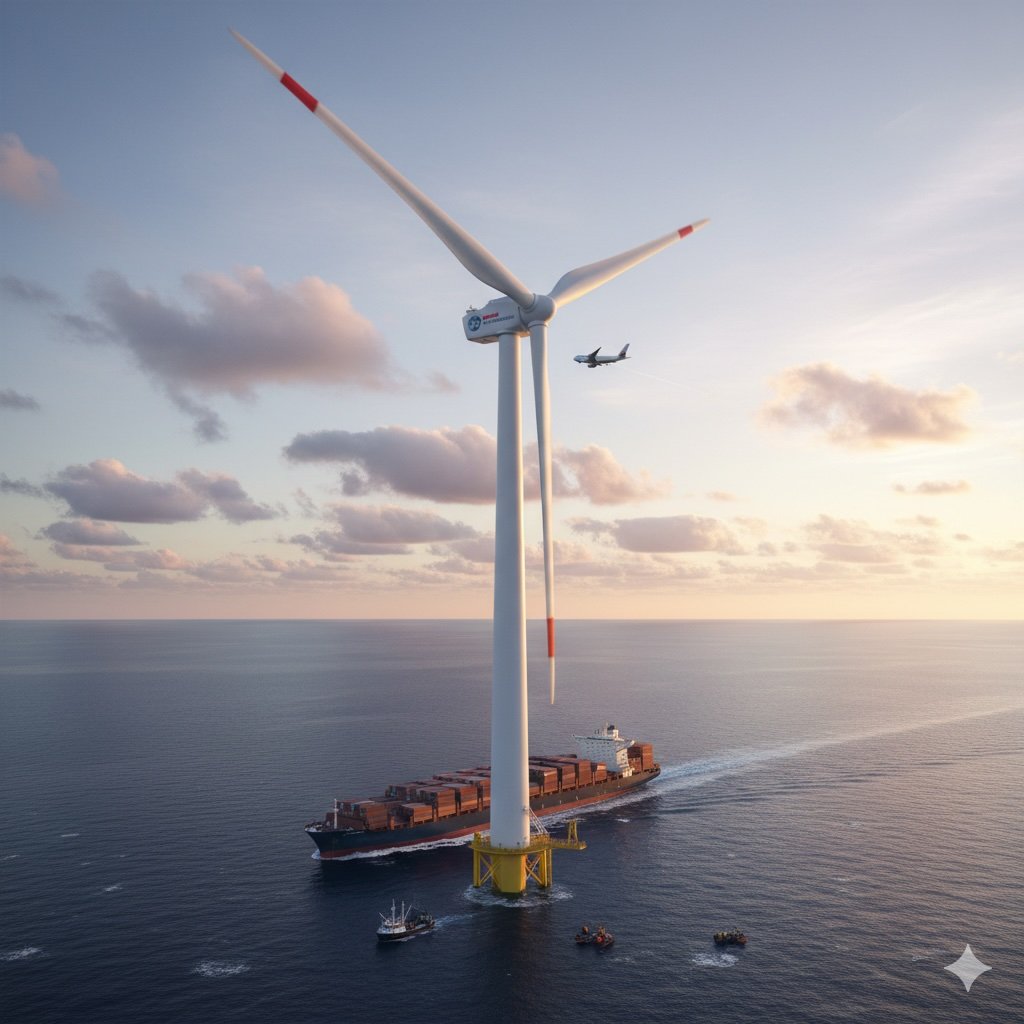
Offshore wind power is more expensive than onshore wind or solar, but it also benefits from a much steadier supply of offshore wind, can be developed at large scales, and plays an important role as part of a diversified and renewable energy-focused grid.
Obermann says we’re going to need a lot more electricity in a rapidly electrifying future, up to two to three times more.
“I am a big proponent and believer that you can’t put all your eggs in one basket. We’re going to need clean energy sources feeding into the grid.”
Green Energy Futures CKUA.com Podcast – Subscribe Today!
Green Energy Futures related videos
